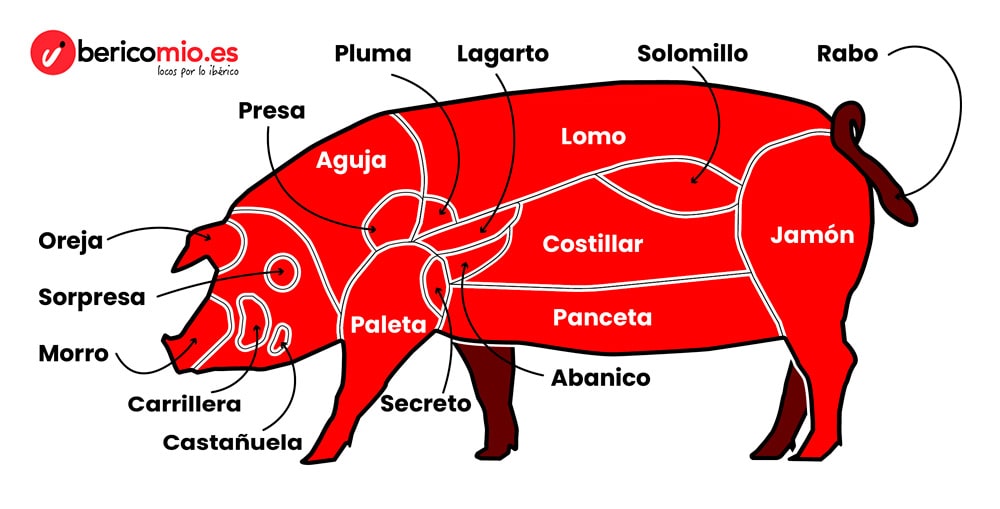Iberian roasts and other meats for incredible dishes
Just as the good weather invites us to barbecues, the cold weather invites us to stay at home eating spoon dishes, or if you are crazy about pork, a good Iberian stew or roast. Although an Iberian stew accompanied by seasonal vegetables or mushrooms is a luxury, a good Iberian roast is spectacular. The latter is also especially practical at Christmas time. If you are a cook, we encourage you to experiment in your dishes with all these pieces. Try different sauces and uses and you will discover all the versatility that Iberian meat offers in stews and roasts.

Meat suitable for Iberian stews and roasts.
Sirloin steak
Due to its quality, texture and flavor, the Iberian sirloin has long been the most famous and demanded cut of pork. It is the Iberian gourmet cutpar excellence. In addition, two pieces of medium size are taken from each animal; it is not uncommon for them to weigh around 500 or 600 grams. The Iberian sirloin is a very lean meat, with very little fat. Therefore, to cook it, the key is to mark it well and keep it over high heat for a short time so that it does not become dry inside. For this reason, it is ideal to be eaten with a sauce.
If you are more of an Iberian roast than a stew, the Iberian sirloin Wellington style, roasted with puff pastry and accompanied by sauce and mushrooms is a delicacy not to be missed. Stuffed, with sauce, grilled… This piece will fit in your gastronomy whether you are a barbecue devotee or if you prefer to taste the meat with interesting accompaniments.
Cheek
The Iberian cheeks are a favorite for stewing. It is the lower part of the jaw, so it is very exercised and has little fat, but when cooked over low heat it will be so tender and mellow that you won’t even need a knife to cut it up. In addition, it has an excellent flavor that will make you enjoy every bite.
Surprise
It is another of the great unknowns of the Iberian pork butchery, but, let’s face it, they will surprise you. They are two small pieces that are located under the eye. They have a texture very similar to cheeks, so we invite you to try them in slow-cooked stews.
Castanet
The Iberian castanet is also known as molleja. It is the pig’s salivary glands that give it a very special texture. It is a very exclusive delicacy, as it is quite scarce: each pig has two castanets of about 50g each. Although it can also be prepared on the grill, fans of this piece say that the ideal way to eat it is cooked over low heat and accompanied by a good sauce.
Needle
The needle is located at the top of the neck. We already mentioned in the barbecue section that it is available with and without bone. The boneless version is widely used to make Iberian roast. It always gives very good results because it is a piece that has a very well distributed fat, which makes it especially juicy.
Dam
Although it is a star piece in Iberian barbecues and grills, the stews made with this meat will make you lick your fingers. It is very common to find it prepared with garlic.
Ear, nose and tail
We put these three pieces together because they have very similar textures. Cartilaginous and tasty, it is not unusual for them to garnish legume dishes, but they are also suitable for slow stews.
Beyond the Iberian roast
The Iberian quartering seems to have no end, that is why we have left pieces such as the knuckle, the hooves or the criadillas for later. The truth is that, as the saying goes, each master has his own book, and therefore there may be different cuts of pork that vary even by geographical area. In this case we have chosen some common pieces and others that are not so common. What we are sure of is that, cooked in one way or another, there is no better dish than one with Iberian pork.




